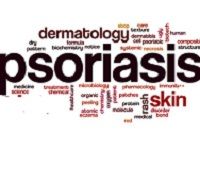Psoriatic Arthritis: Good News on Golimumab
Psoriatic arthritis patients who are treated with golimumab who achieve persistent minimal disease activity (MDA) are more likely to experience long-term improvement than those who do not,

Psoriatic arthritis (PsA) patients who are treated with golimumab who achieve persistent minimal disease activity (MDA) are more likely to experience long-term improvement than those who do not, according to a study published in Arthritis Care & Research on January 25, 2016.
The study was conducted by Arthur Kavanaugh, MD, of the University of California in San Diego, and colleagues.
The researchers used data from the GO-REVEAL trial, which was a stage III, randomized, double-blind trial. The 405 participants received injections of a placebo, 50 mg of golimumab, or 100 mg of golimumab every four weeks. At week 16, patients with less than 10% improvement were reevaluated.
Those taking a placebo were moved to the 50 mg golimumab group, and those taking 50 mg were moved to the 100 mg group. At week 24, all patients still taking the placebo were moved to the 50 mg golimumab group. Between weeks 24 and 52, all patients were receiving either 50 or 100 mg of golimumab. After week 52, the treatment was increased or decreased as determined by the investigator.
The current study was a post-hoc analysis of data from the GO-REVEAL trial. The reseachers specifically looked at 7 PsA outcome measures: swollen joint count, tender joint count, Psoriasis Area and Severity Index (PASI), patient pain visual analog scale score, patient global assessment of disease activity VAS score, Health Assessment Questionnaire disability index score, and tender enthesis points.
The authors say they used “observed data from randomized patients with nonmissing MDA and/or radiographic data at weeks 14, 24, 52, 104, 148, 196, and 256, time points at which data were available to analyze the MDA status.”
No matter which treatment was used, the patients who had MDA at equal to or more than 3 or 4 time points experienced less radiographic progression, as well as more improvements in physical function. However, those same patients did not seem to have any changes in the skin symptoms of PsA.
This study did have some limitations. For example, about 30% of the participants in the GO-REVEAL trial dropped out before the end of the study, and the authors of this study did not discern whether or not some of the 7 criteria used to determine MDA were more important than others.
Even given those limitations and a few others, the researchers concluded, “in patients with active PsA, aiming for MDA as part of a treat-to-target strategy may provide long-term radiographic and functional benefit.